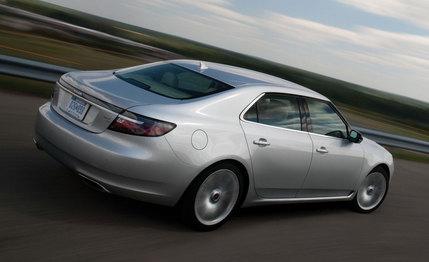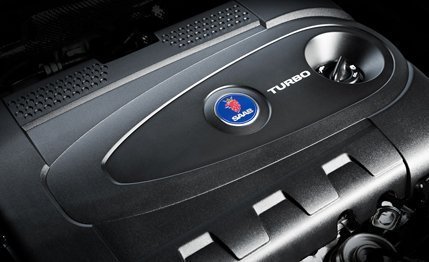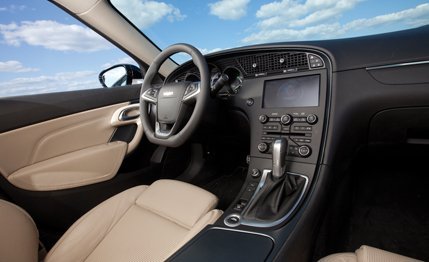 Instrumented Test
Instrumented Test
Saab’s 11th-hour rescue at the hands of Spyker recalls one of our favorite stories of redemption. Although few would call GM’s stewardship of Saab “excellent,” it was certainly an adventure, and the parallels to the 1989 cinematic masterpiece Bill and Ted’s Excellent Adventure are strong. The heroes in both stories coasted for 20 years or so before being saved from the brink of disaster: Bill and Ted by a time-traveling rock groupie from 700 years in the future, Saab by an equally unlikely Dutch supercar maker. And forecasts for Saab’s future under Spyker are dubious—“Bogus Journey” may turn out to be as apt a descriptor for the follow-up to Saab’s GM interlude as it was for the Bill and Ted sequel. Spyker scooped up the gasping Saab for a $74-million song, plus $326 million in shares of the newly formed Saab Spyker Automobiles.
Saab Spyker CEO Victor Muller says that, by 2012, the company will break even, with worldwide sales totaling just 85,000. Saab sold fewer than 18,000 cars in the U.S. in 2008, but its global sales total actually exceeded the magical 85,000 by roughly 10,000 units. And this was with mostly outdated and/or badge-engineered products. Prior to this 2011 model, the 9-5 had gone 13 years without a redesign—twice as long as most cars today.

And then along comes this knockout. The taut styling invites long stares, and the aggressively tapered greenhouse and blacked-out pillars identify this as a Saab—the first in a while that doesn’t look like a ’90s model. Two trim levels ultimately will be available. The base model will be powered by a 220-hp, 2.0-liter turbocharged inline-four and will be offered with a choice of six-speed manual or automatic transmission and front- or all-wheel drive. For now, only the uplevel Aero is available, powered by a turbocharged 2.8-liter V-6 that churns out 300 horsepower and 295 pound-feet of torque. This is paired exclusively with a six-speed auto and Saab’s XWD all-wheel drive.
Cool touches abound inside, neutralizing the sea of black plastic in which they swim: The IP needles are rendered in neon-slime green; the shifting-matrix air vents look likethey were inspired by the same ’80s music videos that Bill and Ted watched; and the start button is mounted in Saab’s traditional ignition-switch location on the center console. Nestled into the middle of the speedometer is a high-resolution display showing supplementary vehicle, navigation, or audio information; a head-up display is optional. In a nod to Saab’s aeronautical past, the IP display can show speed in an altimeter-style scrolling readout that, combined with the traditional speedometer surrounding it and the head-up display, results in triplicate reporting of velocity and zero convenient alibis for the question, “Do you know how fast you were going?”
A chassis controller that Saab calls DriveSense is standard on Aero cars, optional on the upcoming 2.0T. It offers three positions: comfort, intelligent, and sport, with intelligent being the default. In sport mode, the steering gets heavier, the throttle and the shift mapping become more aggressive, and the shocks firm up. “Intelligent” is the same as “comfort,” but it mimics the sport mode’s shock and steering settings under hard cornering.

Even widely available gadgets and functions are executed here with an extra degree of thought. For example, Saab’s lane-departure warning chime is particularly shrill when the car drifts over a line, but it is programmed not to beep if it detects steering input. So, while most systems scold the driver for making unsignaled lane changes, the Saab does a better job of detecting the driver’s intentions and spares most of the nannying.
It’s comfortable inside, too. The fantastic bolstering of the front seats had some staffers suggesting that GM keep these thrones and install them in the Corvette. Firm bottom cushions keep them comfortable all day long. Those confined to the back seat will be pleased, too, as the Saab offers more space than the BMW 5-series and Mercedes-Benz E-class. Saab may not enjoy the cachet of those cars, but comfort doesn’t care.
What appears to be a haphazard scattering of buttons across the center stack turns out to be highly intuitive, and specific functions are easy to locate. Most tasks are controlled via an eight-inch display, navigated either by poking the screen or twirling a knob below it. The menu structure is logical and the range of options offered is impressive, allowing drivers to tailor exactly what differs, for example, between DriveSense’s comfort and sport modes.